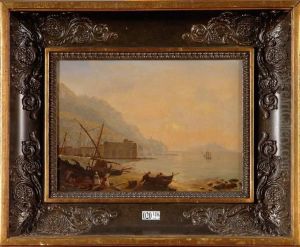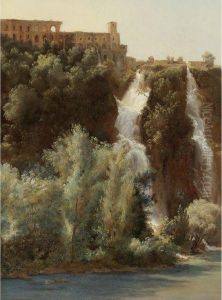Gilles Francois Closson Paintings
Gilles Francois Closson was a Belgian landscape painter, born in 1796 in Liège, Belgium. His work is significant for the Romantic movement that swept through European art in the late 18th and early 19th centuries. Closson's landscapes are known for their dramatic intensity, attention to detail, and the ability to convey the sublime beauty of nature. Despite being less well-known internationally than some of his contemporaries, his contributions to the landscape genre have been appreciated for their emotional depth and technical skill.
Closson's early life was marked by a passion for the arts, and he pursued his studies at the Academy of Fine Arts in Liège, where he was influenced by the works of the old masters. His fascination with nature and the outdoors led him to specialize in landscape painting, a genre that allowed him to explore the themes of beauty, wilderness, and the sublime. Throughout his career, Closson traveled extensively across Europe, capturing the varied landscapes of Belgium, Italy, and France. His travels not only provided him with inspiration but also allowed him to study different light effects and techniques, which he incorporated into his work.
During his lifetime, Closson was recognized for his contributions to Belgian art and was a member of several artistic societies. His works were exhibited in various salons and galleries, gaining him a respectable following. Despite his death in 1842 at the relatively young age of 46, Closson's legacy lived on. His paintings are now housed in several prestigious museums and collections, where they continue to be studied and admired for their beauty and emotional resonance. Closson's approach to landscape painting, characterized by a blend of realism and romanticism, has earned him a place among the notable Belgian artists of the 19th century.

